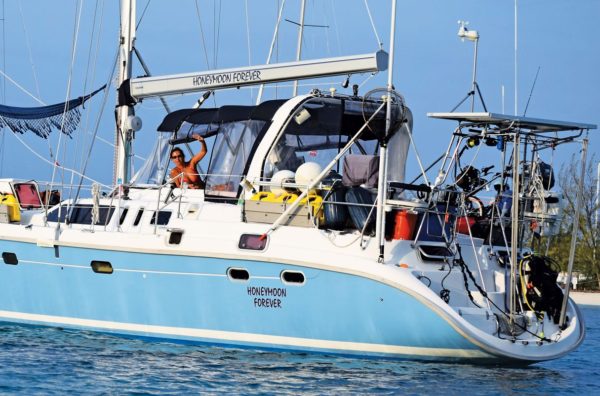A lot is made of Bonaire and its wonderful abundant reefs. And all of it is true. I first dove Bonaire back in the early ’90s and it was pretty amazing then. Today I find it just as amazing.
After a little over 40 years of diving and having logged close to 4000 dives – I am still awed when I dive a place of wonder and beauty. Not all dives are created equal, but as it was back in the ’90s during my first visit, Bonaire is still wonderful. And new growth is apparent everywhere you look. It has abundant fish life, though mainly small reef fish. For some reason you do not see a lot of large fish in Bonaire. Great visibility and steady temps year round make it a diver’s choice destination.
Hotels and dive shops to fit all different budgets line Kaya Gob N. Debrot and C.E.B. Hellmund – the main roads along the western shore. The roadsides are dotted with large and small rocks painted bright yellow bearing the name of the reefs at that location. All coastal waters surrounding Bonaire and Kline Bonaire form part of the Bonaire National Marine Park. And you must buy a tag even to snorkel there. Fees are $10 for a snorkel tag, $25 for a dive tag. It is valid for one year. The money goes towards the management and protection of the park.

The majority of the diving in Bonaire takes place on the leeward or western side of the island ranging from Karpata in the north to the slave huts in the south. There you will find over 50 named reefs and dive sites. Nearly all can be accessed from the shore. Forty-seven of them can also be accessed from a boat and there are mooring balls throughout the island. The shoreline is rocky with a combination of crushed coral and rock. There is very little natural sand beach area in Bonaire. The really good part is that you are less than 50 yards from shore to reef, and in many places, much closer. The mooring balls are placed so that the bow of your vessel points towards the shore and your aft hangs over the reef line. If you are diving from a boat, your own or charter, you have zero swim time to get to the reef. How cool is that?

Bonaire and Kline Bonaire are almost totally surrounded by a fringing reef that slopes gently from the shoreline to a depth of approximately 30ft where the wall drops to 150ft and deeper in most places. Some of my favorite dive sites are: Something Special, 18th Palm, Reef Scientifico and Buddy’s Reef. The main town is Kralendijk. There you will find shops and restaurants to suit everyone’s taste and style. There are a few other tourist activities and sites to see on Bonaire but for most the main reason for visiting the island is definitely the diving.

Diving Curaçao might be one of the best kept secrets in the Caribbean. When people think of Curaçao they normally think of the great beaches, resorts, culture and history and the variation of landscape, in other words a destination with diversity. Few (outside of Dutch nationals) travel to Curaçao for the diving. With that thought in mind please allow me to enlighten you—Curaçao has amazing diving! There are 82 named and accessible reefs, thirty-one of which can be accessed from the shore. Like Bonaire, the majority of them are on the leeward side of the island and run from Oostpunt in the south to Westpunt / Watamala in the north.

The first thing that stands out is visibility. It is incredible, no matter what site you dive. You have easily 200ft plus – as far as the eyes can see underwater. A fair amount of our beach dives had small piers, making entering and departing the water so much easier. Another plus is that most have small dive shops right on the beach that can rent gear, refill tanks, and offer local advice.
The reefs in Curaçao are pristine and full of vibrant colors and growth. Massive colonies of hard and soft coral formations are found no matter where you are diving. Fish are ubiquitous, diverse in species and variations from the smallest of damsels to the largest moray eels and barracudas.

The profile of the dives is very similar to Bonaire as far as the closeness to shore and the way the reef slopes downward until you reach the drop-off. Even when we were at 84ft diving the Alice in Wonderland Reef, Westpunt, we still had over 200ft of visibility.
Some of our favorite dive sits in Curaçao are: Alice in Wonderland, Vaersenbay / Kokomo Beach, Double Reef, Marie Pampoen, Playa Forti and Saint Marie. We really love the easy access and having piers for getting in and out of the water, and can’t praise enough the friendly welcome offered us by the dive shop operators at all these locations. We have all of our own gear so all we do on site is rent the tanks – the cost of which is minimal – yet we are treated as if we are spending hundreds of dollars. In addition the majority of dive shops have showers, lockers, bathrooms, storage facilities, fresh water dunk tanks for your gear and a full service dive and repair facility.
Just as the title says: DIVING BONAIRE AND CURAÇAO – WOW!






